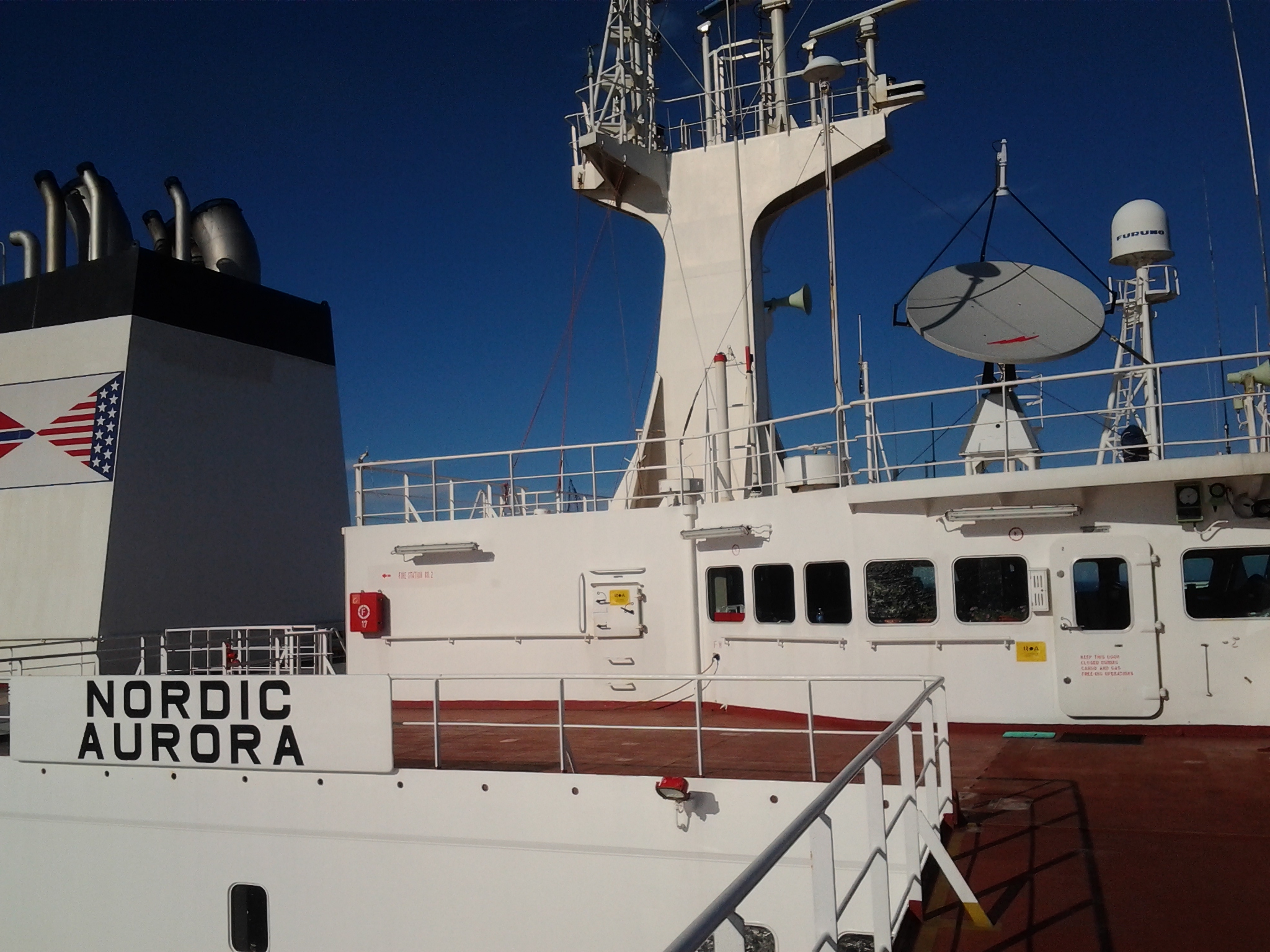Turns out, commercial shipping is in a staffing crunch right now. One of the real concerns people have about working on ships is their lack of contact with the outside world, according to Mary Ellen Kramer, CEO of Maritime Broadband. Sounds like a possible tech fix.
If a sailor has family back on shore, he or she may hardly ever get a chance to communicate with them in any way, as long as they are at sea, because the existing solutions for maritime Internet access were just too expensive. The team here in Brooklyn spent $30 million over ten years, Kramer told us, coming up with a more affordable antennae that can deliver reliable access anywhere in the world.
The company that has built this new, more affordable antennae is called Maritime Broadband. We covered their recent equity round in Startup Roundup.
The problem with the existing Internet solutions were that they were either too big and expensive for commercial ships or they used less reliable bands without truly global coverage. The company stripped the antennae down to its essentials.
“We provide a turnkey solution for commercial ships at sea to have Internet,” Kramer told us.
Ms. Kramer’s husband and cofounder, Zevi Kramer, is an engineer with experience building antennae. He designed the company’s product, the C-Bird antennae. The C-Bird uses the C-Band of radiowaves, which is one of the oldest, best developed bands. It delivers truly global access without rain fade. Kramer solved the size/cost problem with roughly three important innovations:
- No radome. Most antennae on ships have a radome over them, which considerably increases its size and cost. Kramer protected all the antennae’s delicate, expensive parts inside the antennae’s housing itself, which shrunk its bulk down a great bit.
- Two axes of stabilization with a virtual third access. This sounds like it was the toughest challenge for the team. One reason existing antennae cost so much is because they have three engines working all the time to reposition the antennae relative to the satellite. The C-Bird uses software to do a third of the work, using a predictive model that the team developed over three years of experience on actual ships.
- Some assembly required. Shipping the C-bird assembled required ships to rent a crane in port to install it, often at dramatic expense. Now, the device ships in five crates with instructions so that a crew can install it themselves. This has the added benefit, we’re told, of giving the crew more ownership over the device and even some ability to make mechanical repairs on it.
While having Internet access saves shipping companies money by enabling crews to access experts on shore (rather than flying them out to the ship), improves their access to guidance and routing systems and delivers better access to weather information, the chief benefit, Kramer tells us, is improving the quality of life on ships. That sense of isolation has been really hurting the industry. As the C-Bird changes that, it helps companies retain staff. Tenure of staff is critical to maintaining some of the best contracts in shipping.
The first C-Bird models were built in the couple’s backyard. One of those antennae now sit on a roof in Sunset Park, where it’s in receive only mode, in ongoing testing of the guidance system. The C-Bird was there throughout Superstorm Sandy, never lost signal and didn’t need any repairs after.
The company is in the middle of a major transition now. “We’re going from being a company that was mostly R&D to full production,” Kramer told us. Currently, nine ships have C-Bird, but they are in various levels of talks with 3000 ships. The main production work gets done in Michigan but the main electronic components are built here in Brooklyn. She told us that they are close to beginning their first large production run.
The system costs $28,700 and $400 per month for access to the Internet.








